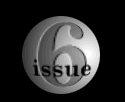




| ||
movie review by Crissa-Jean Chappell [click on photos Studio Movie Web site: |
Most movies based on weepy books swap decent storytelling for melodramatic,
big screen clichés. Not the case with Robert Redford’s The Horse Whisperer,
adapted from the fluffier bestseller by British producer-screenwriter,
Nicholas Evans. Disguising the printed page for a movie poster, Evans wielded
his purple pen like a Hollywood wheeler-dealer. Redford translated the
stardusted prose into something more cinematic than screenplays camouflaged as
sappy paperbacks: a revisionist Western that surpasses its original source.
The Horse Whisperer’s yupster cowpoke (the laconic, nearly-mute character
Redford has portrayed since 1969's Sundance Kid) symbolizes a new brand of
individuality—not a civilizing force, ala white man taming wilderness into
garden. Modern Westerns (1990's Dances With Wolves) celebrate natural
nobility. Instead of endorsing capitalism through the wild frontier’s
settlement, Horse Whisperers and their ilk—godlike figures found in
folklore—defend their community from the villainous outside force once
declared The American Dream.
Redford’s cowboy-shaman, Tom Booker, tends a cattle ranch (no roots and
berries for this non-vegetarian Dolittle). Famed for befriending, rather than
breaking horses, he receives a telephone call from New York "Cover" magazine
editor, Annie MacLean (Kristin Scott Thomas). Her teenaged daughter Grace
(played by 12-year old Scarlett Johansson) and prize-winning horse, Pilgrim,
have suffered a horrific accident at the hands of a truck driver. (Technology
isn’t merely to blame. The weather was icy. Instead of "listening" to her
horse, the rider pushed him after he refused to budge.)
Some ridiculous psycho-babble has been written about growing girls and their
affinity for large, powerful horses. These experts claim that unconditional,
equine love prepares adolescent women for sexual relationships with men. No
wonder Grace’s mother hauls the boo-booed stallion and moody girl to Tom’s
aid—despite his huffing, "Am I being too polite here when I say no in Nevada?
Does that mean yes where you are?"
What would psychologists say about Tom’s horse fetish? Does it prepare him for
romance with the already-married, much larger (at least, psychologically
complex) Annie? Women in patriarchal Westerns usually give little presence.
They signify value-systems the hero must endorse or refuse. The heroine
provokes the hero. In herself, the woman has little importance. Western men,
like Tom, are redeemed by sophisticated Eastern women, like Annie. Western
women are seldom given the same opportunity (hence the rancher’s wife who
longs to visit Morocco, yet resigns to a lifestyle that refuses a day off from
the kitchen.)
Annie isn’t a Western heroine. In this movie, a woman is Tom’s adversary.
Their disparate backgrounds doom the unsuited, May-December affair (without
the predictable stampede to bed) but their similarities seal the conflict.
Annie’s earlobe-length hairdo lends her a masculine appearance, as does the
hat she reluctantly borrows from Tom. The qualities we’d deem "heroic" in him
come across "cold" in Annie. The Horse Whisperer’s soft-spoken demeanor is
often associated with women. (The word "vulnerable" seems to trail every
actress who projects human emotion.) Tom takes this role after confessing his
Achilles’ heel: a fear of aging. (What would we expect from one of the
prettiest male faces to grace the screen?)
Eventually, hero and villain test their character in the final, tidy shoot-
out. Tom must decide if he can abandon his rural lifestyle for a cell-phone-
toting city-slicker. He might resort to the usual tactics: manipulation,
cajoling or even whispering. That wouldn’t do—not in a movie about setting
free those you love. (Forget the T-shirt that says, "Shoot them if they
don’t come back.") Annie’s absent hubby (Sam Neil) pops up long enough to
ingrain this message in near-visible subtitles. The openness of the flowing
landscape (gorgeously lensed in sprawling, wide-screen Panavision by Oliver
Stone’s cinematographer, Robert Richardson) suggests a kind of moral openness
beyond the barbed wire.
Pacing is the film’s major flaw (clocking at two hours and 44 minutes). It
adds to the pensive mood of the piece. Contemporary Westerns often run long.
With so few made, audiences have forgotten the conventions of the genre. Thwarted
by self-consciousness and the need to break rules, many '90s Westerns confuse
length for art status.
With screenwriter Richard LaGravenese (The Bridges of Madison County,
another mawkish, middle-aged romance that translated better to film) Redford,
the director infuses The Horse Whisperer with the rare subtlety expected
from an actor. Wordless scenes, like the opening sequence, illustrate why
movies were made in the first place: to tell stories. Everything else is just
print on a page.
Reprinted with permission of the Sun Post.
Crissa-Jean Chappell works for the Sun Post in South Beach (Miami), Florida.
| |





